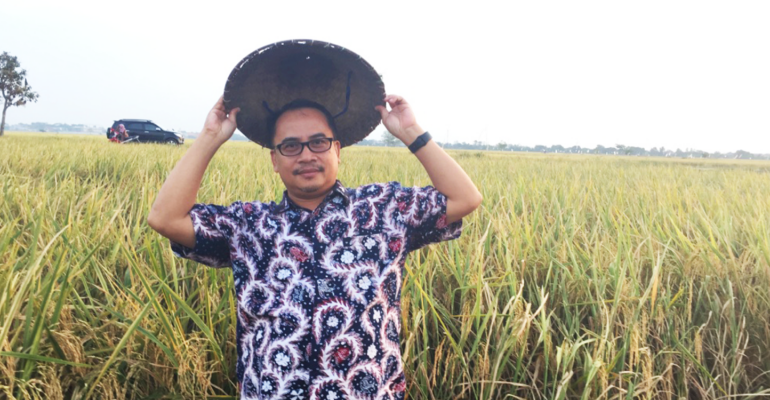Supporting National Food Security, Prof Dwi Guntoro Reveals Herbicide-Resistant Weed Management Strategy

Professor of the Faculty of Agriculture at IPB University, Prof Dwi Guntoro, reveals strategies for managing herbicide-resistant weeds to support national food security. Herbicide-resistant weeds are a threat to the national food supply.
Prof Dwi explained that resistant weeds can reduce rice production by 20 to 50 percent. If the decline in production due to resistant weeds reaches 30 percent and the potential productivity of rice is 10 tons/ha, then the potential loss of production can reach 3 tons per hectare.
“Weed management in the future requires an appropriate strategy based on five pillars, namely precision management, environmentally friendly, low cost, local resource-based, and interdisciplinary,” he said in the Press Conference of Pre Scientific Oration of Professor of IPB University through Zoom (25/4).
He continued, in identifying resistant weeds, it is very important to know what weed species are already resistant to herbicides. In addition, location mapping is also important to provide an overview of weed locations that have begun to be resistant. According to him, this mapping is very useful as a basis for sustainable weed management.
“Prevention strategies can be carried out, among others, education and training of farmers, seedbank management, use of varieties with strong competition, prevention of the development and spread of weed propagules,” he said.
Furthermore, Prof Dwi said control strategies can be carried out through rotation of active ingredients, the use of new active ingredients including the use of bioherbicides, the use of mixed active herbicides, and the development of innovative control techniques, such as the use of plasma technology.
One alternative for the use of new active ingredients in the development of bioherbicides is to utilize plant allelopathic substances.
“Some bioherbicides derived from weed biomass are very potential to be developed, such as alpha-cyperon from the tuber of teapot (Cyperus rotundus) and wogonin from Tetracera indica weed extract. Research on bioherbicide development needs to be continued to increase its effectiveness,” he said.
In addition, Prof Dwi said the development of technological innovations for weed control continues. One alternative is the use of plasma technology.
“The results showed that the application of plasma technology at a voltage of 140 kV with a duration of 80 seconds in the pre-emergence and post-emergence phases can control the test weeds,” he said. (dr/Rz) (IAAS/Ard)


